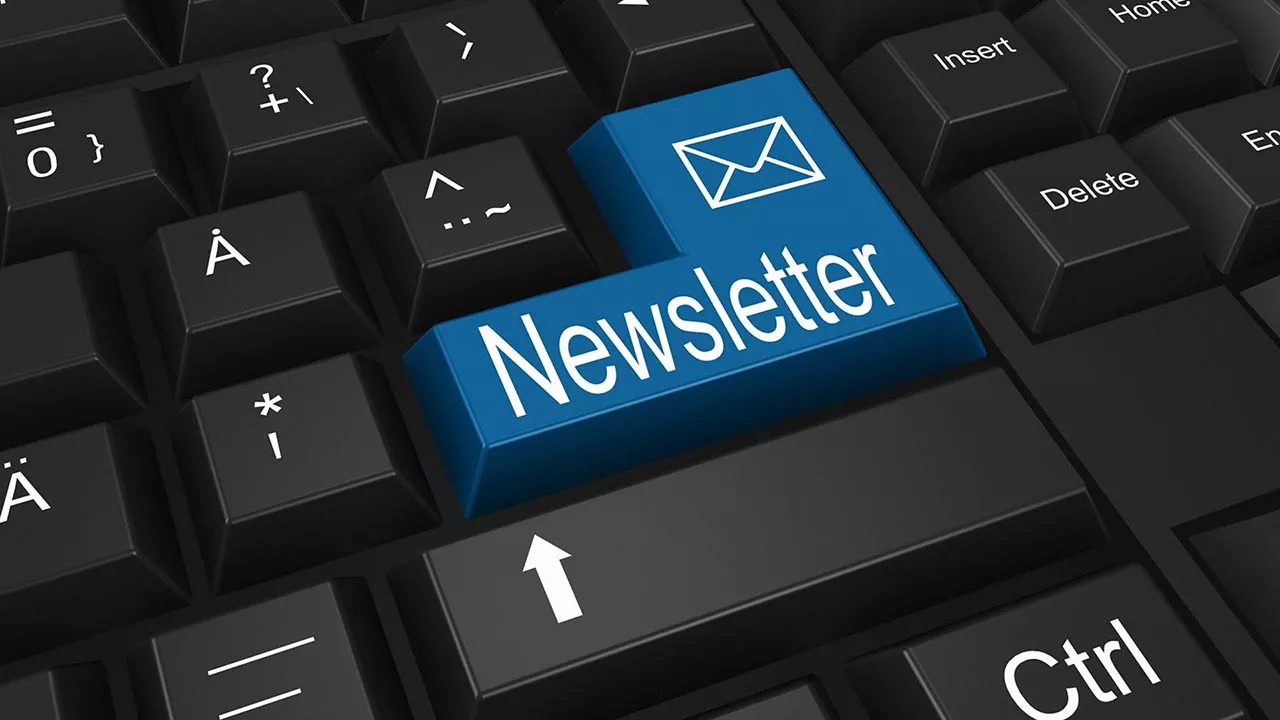
Have you ever wondered how to start an email newsletter? You might think it’s impossible to create one without a large audience (and by extension, tons of subscribers), but the truth is that you can get started with just a few people.
In this post, I’ll show you how to create your own email newsletter from start to finish. We’ll cover everything from setting up your account and designing the perfect template for your emails to choosing content and growing your audience. After reading this guide, you’ll be able to build an effective email marketing strategy that will help you reach new readers and build an engaged community around your blog or business.
Why do you need an email newsletter?
The main reason you ought to create an email newsletter is because it’s a great way to keep in touch with your customers. Email newsletters are also useful for driving traffic to your website, building your email list, and building your brand.
What does a good email newsletter look like?
- Short and concise: Emails should be short. They shouldn’t be longer than two or three paragraphs, and you should use short sentences instead of complicated ones.
- Easy to read: A good email newsletter is easy to navigate, as well as readable and understandable for the reader. If your newsletter is long and hard to read, people will just click away from it without reading it at all!
- Interesting: Your readers need a reason why they should keep reading; make sure yours has one! Make sure your content has the right mix of images, links, text and other elements so that it looks appealing without being too busy or distracting from the main point of the article/post you are sending out (which should always be about something relevant).
Decide how often you are going to send the newsletter
The frequency of sending your newsletter depends on your business, its size and the type of content you send. If you are a small business, then sending it twice a month might be enough. If it is a large company with many products or services, then sending it once every week should be sufficient.
You have to think about what kind of content people want to get from you and how often they expect to receive emails from you. Do they want something more frequent? Are they only interested in receiving information about new products? Or do they prefer less frequent updates about what’s going on in the company?
Read Steve White’s recent article called “How much is too much email marketing?”

Create a newsletter template and branding
A template is the basic layout of your newsletter, including font choices, color scheme, and logo. It also includes elements like headers that appear at the top of each email as well as footers that contain links to unsubscribe and other important information in case you don’t want to include them in your actual content.
The most important thing about creating a newsletter template is making sure it looks professional because readers won’t trust you if they think your emails are sloppy or amateurish-looking.
To make sure yours does look professional:
- Use fonts that are easy on the eyes—avoid ones with thin lines or long tails like script fonts because they’re hard for some people to read quickly;
- Stick to one color scheme (usually black text on white) throughout so it doesn’t distract from your message;
- Use consistent spacing between paragraphs and headlines;
Determine the content of your email newsletter
Now that you’ve done the prep work, it’s time to sit down and decide what content you’ll include in your email newsletter.
The number of articles that you choose to include depends on how many people are on your list and how often they expect to hear from you. If every Thursday is a good day for sending emails, but you only have one article per week ready for publishing, then send out an email once per month instead. The goal here is consistency—if someone knows when they can expect their next dose of news from you, they’re more likely to keep coming back!
It’s also important that your readers know who you are and what kind of content they can expect when opening up an email from your brand. That’s why I recommend having an introductory paragraph with some information about who sent them this issue (you!), where they should go if they’d like more information about what else we offer (your website), as well as why this particular newsletter was sent (because there was something important happening).
You don’t need lots of text: most readers will scan through their inboxes quickly looking for relevant keywords or phrases that catch their eye before moving onto whatever else might be waiting there too..
Segment your subscribers and groups
This is a very important step, because it’s how you divide your subscribers into different groups. For example, let’s say you’re an ecommerce store selling swimsuits. You’d want to segment your subscribers into two groups: people who bought a swimsuit from you last month, and people who haven’t bought one yet. This way, when someone buys a swimsuit from your store, they’ll receive emails about new products or sales in the future—but if they don’t buy anything from your store that month (or year), then they won’t be bothered again by these types of messages until they do purchase something again in the future.
By segmenting your subscribers into different groups based on their interests and purchases over time (and maybe even use behavioral data like what pages they visit on a website), it allows for much more targeted messaging and reduces overall email clutter for everyone involved!
Write compelling subject lines, headlines and articles
Now that you’ve got your email list all set up, it’s time to write some content. The first step is to think carefully about the subject lines and headlines of your emails.
Your goal here is to get people excited enough about what they’re reading so they’ll open the email and read it. Your job is not necessarily to sell them anything right away; rather, it’s just an invitation for them to take a look at what you have in store for them if they decide there’s something worth reading.

Read our guide called ‘Copywriting for email’
Make your email newsletter sharable
When you’re done creating your newsletter, you want to make sure it’s easy for people to share. Make sure you have social sharing buttons, including Facebook and Twitter at the top of your email, right below the title of the newsletter (or above if that makes sense).
Use images that convey your message elegantly
Once you’ve written your article, it’s time to add a little visual appeal! Images are one of the most important elements for creating an email newsletter that stands out from the crowd.

All of them have to be relevant — the subject line, the headline, and especially the body of your content. If someone opens an email based on a subject line they’re interested in and then sees an image that has nothing to do with it at all (or worse yet, something offensive), chances are high that they’ll hit “delete” immediately without ever reading anything else you wrote. Try not to use any images unless they’re directly related or helpful for conveying information about what’s going on in your content (and if possible make sure those look good too).
Choose timing for sending out emails carefully
Timing is everything when it comes to email newsletters. You want your subscribers to be engaged, receptive and ready to act. If you send an email during the middle of their work day, they might find it difficult to engage with your content when they’re trying very hard not to get fired from their job!
So think about when your audience is most likely online, engaged and receptive when choosing a time for sending out emails.

Read our blog called “What is the best time to send your email marketing?”
Don’t forget about analytics!
If you want to improve your newsletter, it is important to know how subscribers are engaging with it. You can do this by using a tool like Google Analytics or the analytics built within your ESP to track the performance of your newsletter.
Conclusion
If you’ve been thinking about putting together a newsletter but aren’t sure where to start, we hope this guide has helped get you ready. Once you’ve decided on your purpose and audience, it shouldn’t take more than an hour or two to draft an email that you can send out every week. And if you feel like you don’t have the time or energy to do all of this yourself, don’t worry! Red C is here for when you’re ready and willing to help with all things email marketing.
***
As an email marketing agency, who has almost 20 years email marketing experience, we have produced 1000s of email newsletters across dozens of sectors including fashion, travel, financial services and retail.

comments